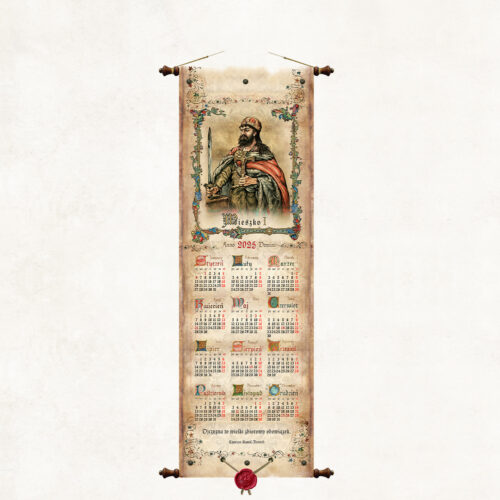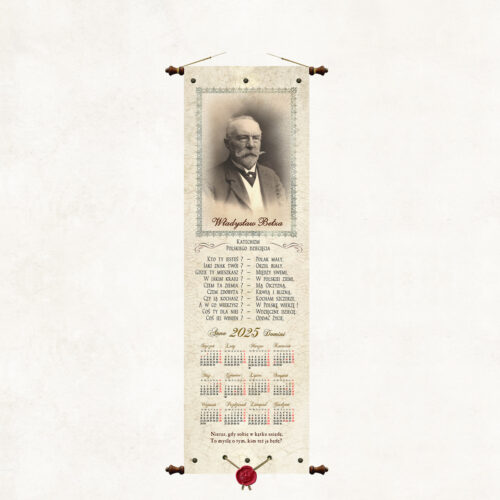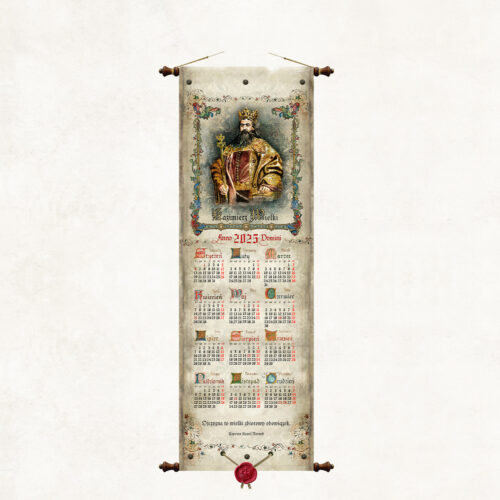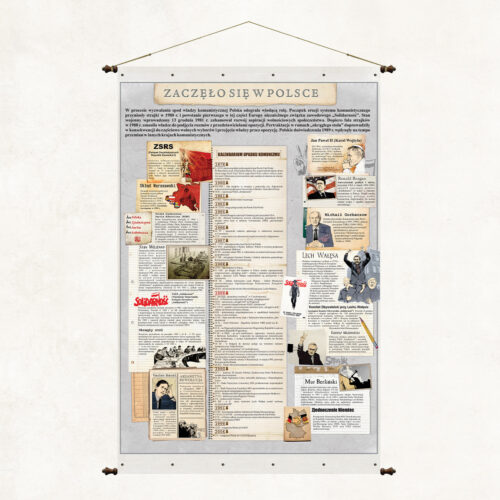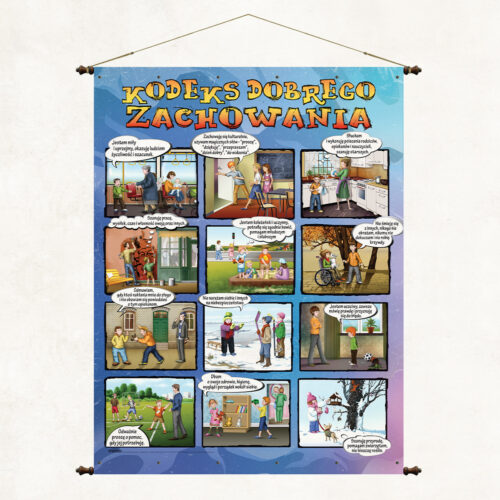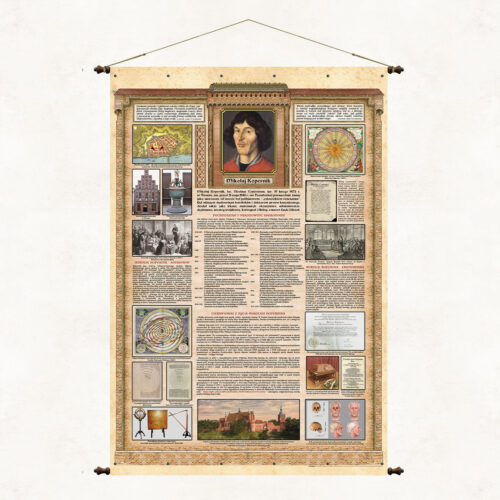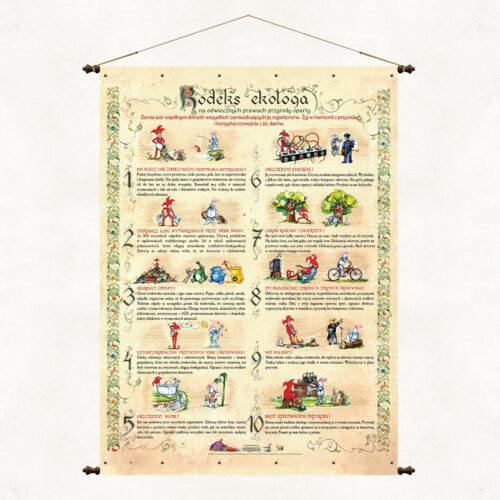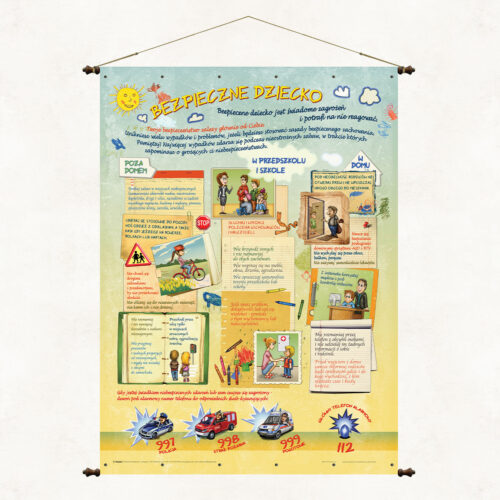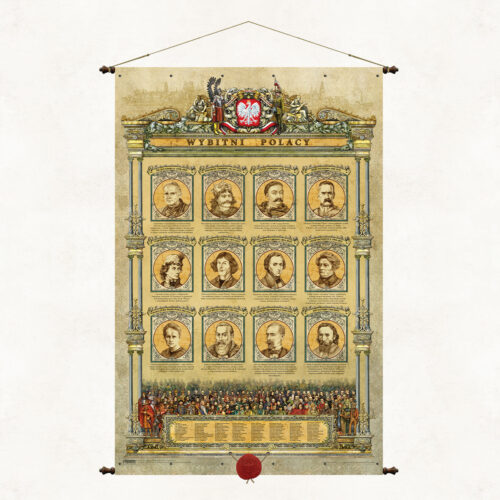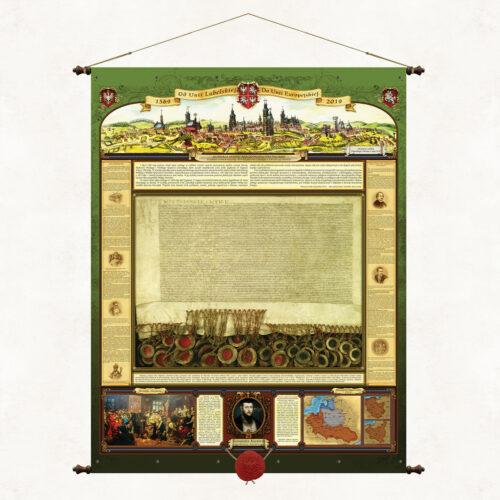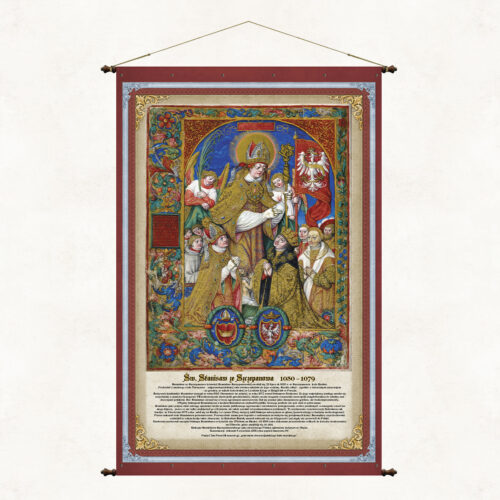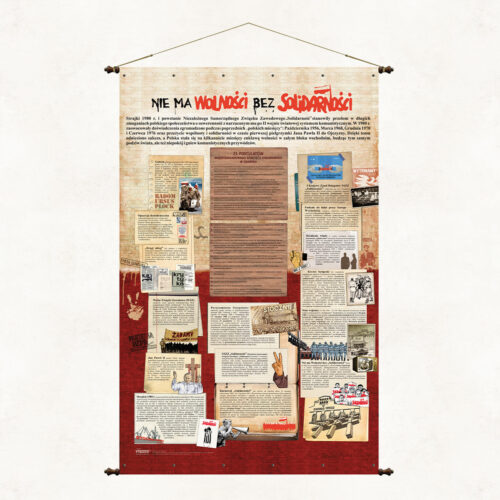-
MIESZKO (922–992) The first historical ruler of Polish lands, the actual creator of Polish statehood. An efficient politician and a talented leader. He fought for Western Pomerania and wars with the Czechs, conquering Silesia and Lesser Poland. By being baptized in 966, he strengthened the state, equaling it with the Christian countries of Europe. He established a Polish bishopric in Gniezno and initiated the construction of numerous defensive strongholds and churches.
-
Scroll calendar - Władysław Bełza Władysław Bełza (born October 17, 1847 in Warsaw, died January 29, 1913 in Lviv) - Polish neo-romantic poet, writing in a patriotic spirit, called the eulogist of Polishness. Publicist, animator of cultural, educational and press life, co-founder of the Polish educational organization Macierz Polska. Author of, among others, the famous patriotic poem "Catechism of a Polish Child" which begins with the words Who are you? - Little Pole...
-
CASIMIR THE GREAT (1310 – 1370) The last of the Piast dynasty, king of Poland from 1333. Due to his talented foreign policy and the small number of wars fought, he was called the "diplomatic king" and "he who found Poland wooden and left it brick", due to the construction of dozens of new cities and expansion or building several hundred new castles and fortresses. His reign actually consolidated the process of unification of Polish lands and led Poland out of political isolation in Europe, after nearly two centuries of division.
-
Wartościowa edukująca historycznie publikacja, której intrygujący tytuł pobudza do zastanowienia, o jakie wydarzenie historyczne chodzi. W Polsce miało początek wiele wydarzeń, ale nie wiele z nich jest tak fałszywie interpretowanych przez część europejskich historyków, jak właśnie początek i przyczyna upadku reżimów komunistycznych a szczególnie tego najgorszego – Związku Radzieckiego. Staramy się poprzez tę planszę dać udokumentowaną odpowiedź na istotne pytania dotyczące tamtego okres i tamtych wydarzeń.
-
The board presents a selection of over 120 outstanding Poles who made a significant contribution to the creation and strengthening of Polish statehood, culture and national heritage. Their images appear at the bottom of the map and are numbered, which allows easy identification of the person according to the list below. In the center of the board there are portraits of 12 figures particularly important to Poles and our national tradition.
-
The board was published in 2019, on the 450th anniversary of the Union of Lublin. The attractive, stylized form of the publication presents the history and significance of that great event. We presented: – content of the act of the Senate of the Republic of Poland establishing 2019 as the year of the Union of Lublin – a photocopy of the Act of the Union of Lublin in actual size – panorama of Lublin from 1614 – extensive fragments of the original text of the union – a brief historical outline of events related to the Union of Lublin – fragment of the will of King Sigismund II Augustus referring to the Union of Lublin – image of Jan Matejko's painting - Union of Lublin – Map of the Polish-Lithuanian Commonwealth from the 17th century. The board is topped with a wax seal with an eagle, is 98 cm wide and is mounted on decorative bars.
-
The board commemorates Saint. Stanisław of Szczepanów (also Stanisław Szczepanowski), bishop of Krakow, martyr, saint of the Catholic Church and one of the main patrons of Poland. The illumination placed on the board shows Saint. Stanisław as the patron saint of the Kingdom of Poland and comes from the work of Jan Długosz entitled Catalog of the Archbishops of Gniezno (Latin: Catalogus archiepiscoporum gnesnensium) from before 1476. The author of the painting is the Cistercian Stanisław Samoshootnik, a. Stanisław of Mogila (1480 - 541) - Polish painter, illuminator and miniaturist. The illustrations for the catalog were made several dozen years after Jan Długosz's death.

